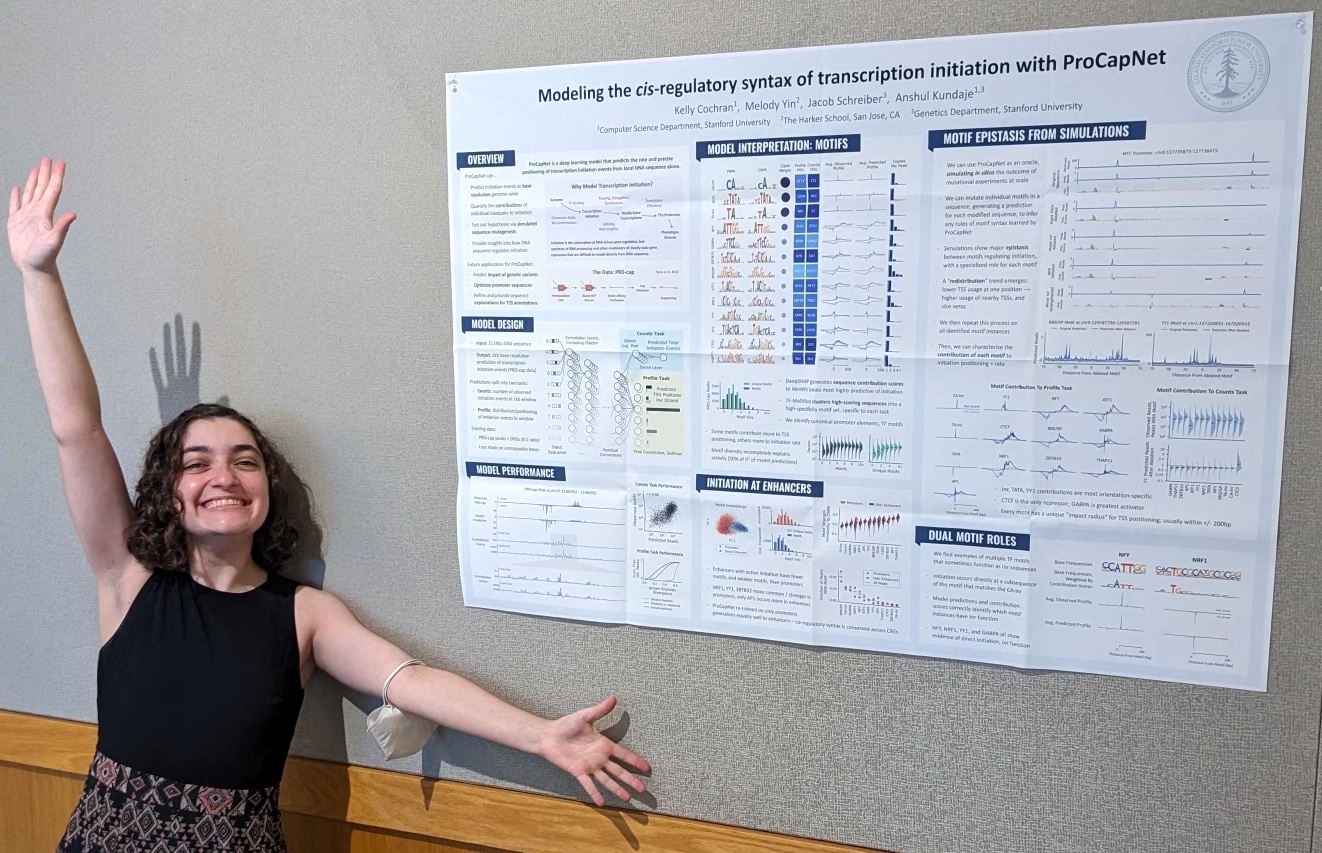Kelly Cochran
Hello!
I'm a PhD Candidate at Stanford studying computational biology. My thesis work in the Kundaje Lab has been developing ProCapNet, a deep learning model that predicts transcription initiation from DNA sequence alone. Interpreting ProCapNet provides insights into how the human genome encodes gene regulation, ultimately aiming to improve our understanding of genetic causes of disease.
I love teaching as much as I love science -- mostly CS109, Stanford's Intro to Probability course, where we build all the way up from fundamentals to the theory behind machine learning. I've also mentored several junior scientists (high school and undergrad) throughout my PhD.
Before Stanford, I worked with Dr. Shaun Mahony at Penn State University. We studied how well sequence models transfer across species, including how a simple domain adaptation strategy can reduce model mispredictions in transposable elements.
I graduated from Duke University with a Bachelor's in Computer Science and Minors in Statistics and Computational Biology, where I started my research career in the lab of Dr. Jeremy Kay, investigating isoform diversity in neuron cell-surface receptors. I also proudly served as drum major of the Duke University Marching Band.
In my free time, I volunteer at Pets In Need Palo Alto, rock climb, bake, and make music with the Stanford Laptop Orchestra.
Select Papers
Cochran, K., Yin, M., Mantripragada, A., Schreiber J., Marinov, G., Shah, S.R., Yu, H., Lis, J.T., & Kundaje, A. 2024. Dissecting the cis-regulatory syntax of transcription initiation with deep learning. bioRxiv. Under review.
Cochran, K., Srivastava, D., Shrikumar, A., Balsubramani, A., Hardison, R.C., Kundaje, A., & Mahony, S. 2022. Domain-adaptive neural networks improve cross-species transcription factor binding prediction. Genome Research, 32: pp. 512-523.
Ray, T., Cochran, K., Kozlowski, C., Wang. J., Alexander, G., Cady, M.A., Spencer. W.J., Ruzycki, P.A., Clark, B.S., Laeremans, A., He, M-X., Wang, X., Park, E., Hao, Y., Iannaccone, A., Hu, G., Fedrigo, O., Skiba, N.P., Arshavsky, V.Y., & Kay, J.N. 2020. Comprehensive identification of mRNA isoforms reveals the diversity of neural cell-surface molecules with roles in retinal development and disease. Nature Communications, 11(1): pp. 1-20.

